Western Pennsylvania has been a hotbed of National Register activity during the past year. From three Washington County farms, to an industrial facility and a Salvation Army building in Pittsburgh, to a Masonic lodge in Latrobe and a synagogue in Brownsville, the National Park Service has recently listed an eclectic variety of properties in that part of the state.
Before Washington County became a leading producer of coal, oil, and natural gas, its rolling landscape was dotted with farms that included diversified cropland and sheep pastures (See the agricultural context for Southwestern PA on the PHMC website). Each of the three farms have notable farmhouses and historic outbuildings:
Nesbit-Walker Farm, Canton Township, LISTED, 2/02/16
This farm features an architecturally significant example of an I-House (c. 1880) and an 1845 log barn. The “I-House” was one of the more common patterns used in farmhouse construction in this county in the second half of the nineteenth century. This two-story, side-gabled vernacular house form is characteristically one-room-deep and was identified by cultural geographers in the 1930s. The I-House form is closely associated with rural culture in the southwestern counties of Western Pennsylvania and continued spreading into the Midwest from there.
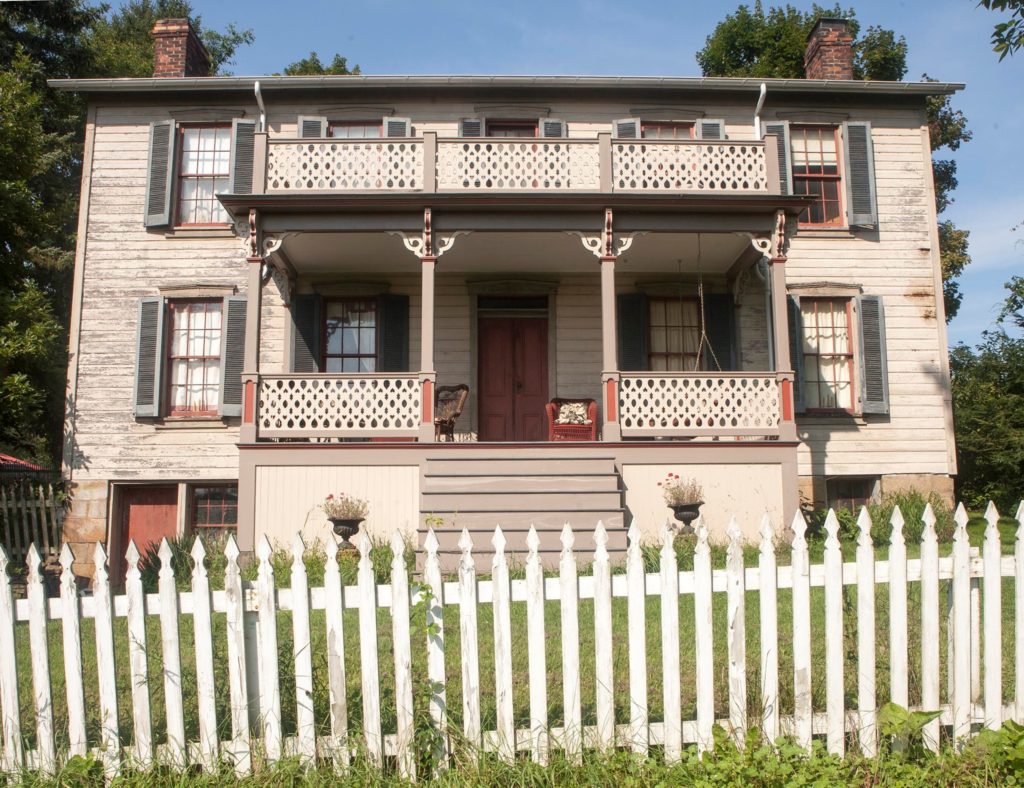
Nesbit-Walker Farm, Washington County
The barn is a notable surviving example of its type and is significant for the functional way the form meets the agricultural functions of processing grain, housing animals, and storing fodder under one roof.

Nesbit-Walker Farm Barn, Washington County
Plantation Plenty, Independence Township, LISTED 2/02/16
The farmstead at Plantation Plenty was originally listed in the National Register in 1975, focusing on the architecturally significant, early 19th century, brick, Georgian farmhouse, so this recent nomination describes and defines the farm’s agricultural significance. The property contains many building types, farm fields and landscape components, several early examples of built-in farm equipment, and other facilities that were innovative for their time. The farm was a leader in introducing fine-wooled sheep in this region. Its nomination reads “No truly comparable farms are known to have survived with integrity at this scale and complexity in this county or region, and no other farm in the area is known to show this level of functional design, innovation, and integration.”
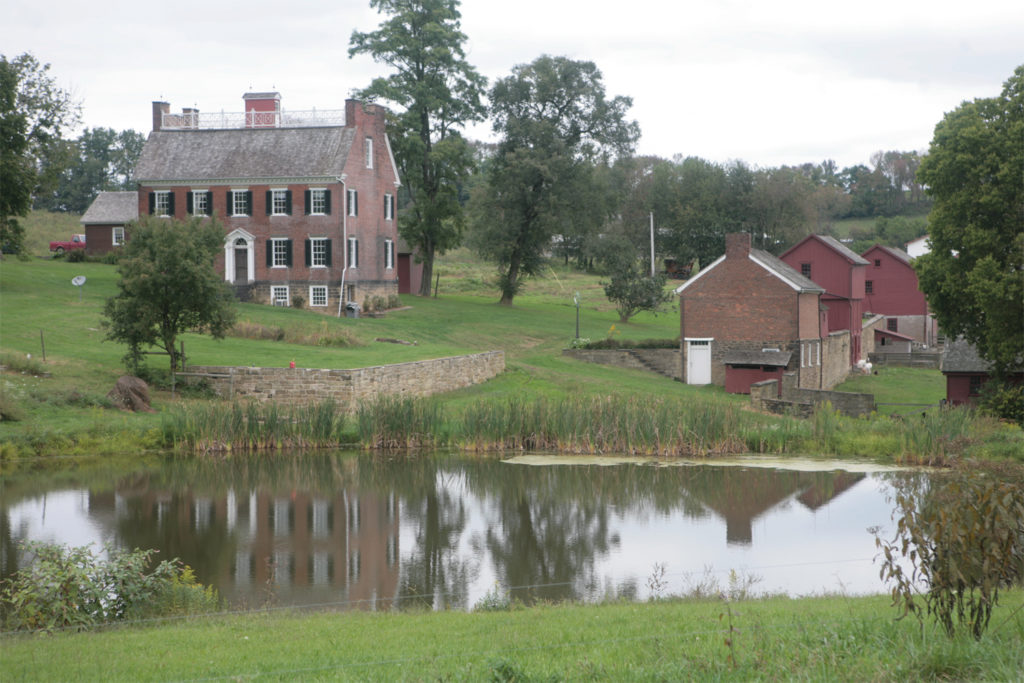
Plantation Plenty, Washington County
David Slusher Farm, Amwell Township, LISTED 2/02/16
Like many families in this area, David Slusher’s father, Christopher, came here after living for a period in Virginia. Featuring an 1849 residence with a Georgian floor plan and Greek Revival-style detailing, the property evolved almost continually to adjust to different trends in raising livestock including, cows and horses, followed by an emphasis on sheep, and later swine and poultry. In addition, the owners raised crops, produced maple sugar, operated a dairy, and processed pork and other meats.
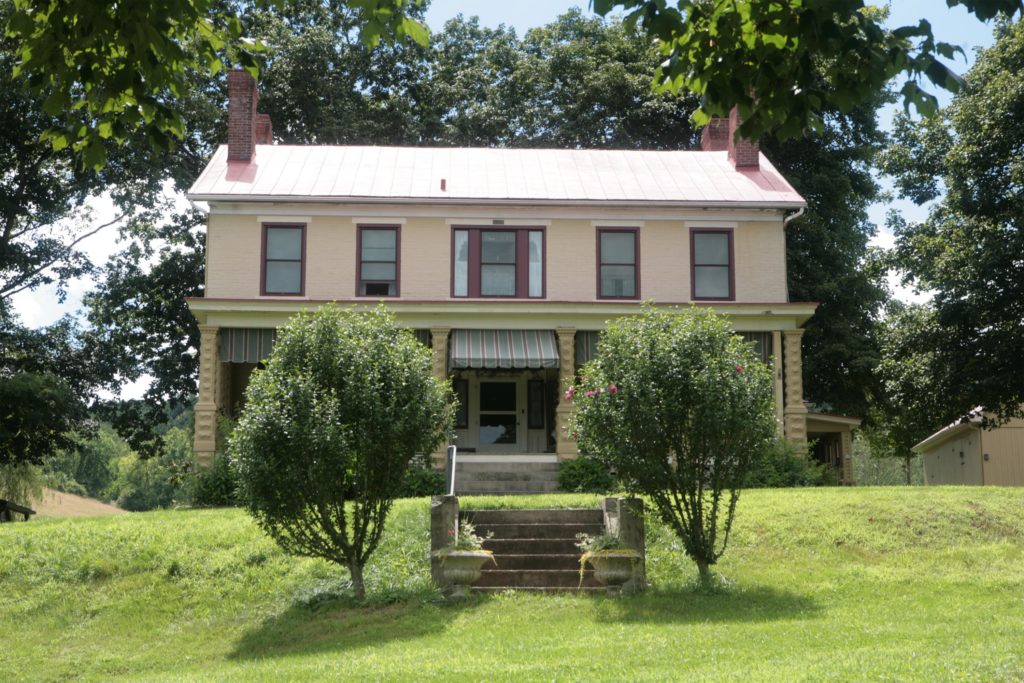
David Slusher Farm House, Washington County
In contrast with these agricultural properties, two characteristically urban buildings were listed in the city of Pittsburgh:
Pittsburgh Brass Manufacturing Company Building, 147-3155 Penn Avenue, LISTED 2/02/16
The 1903 Pittsburgh Brass Manufacturing Company Building is significant as an independent specialty metal manufacturer. Categorized as a “brass founder and finisher,” the company manufactured bronze, brass and aluminum products and was “one of the largest brass manufacturing concerns in the Pittsburgh district.” All of its operations were combined under one roof: a brass foundry, machine shop, erecting shop and a shipping room. At this property, the company manufactured and developed new products for industrial clients, including those from the iron and steel industry, as well as producing ornamental metal work. Among their most successful innovations were a frost-proof water closet and the patented bronze roto-flex ball pipe joint.
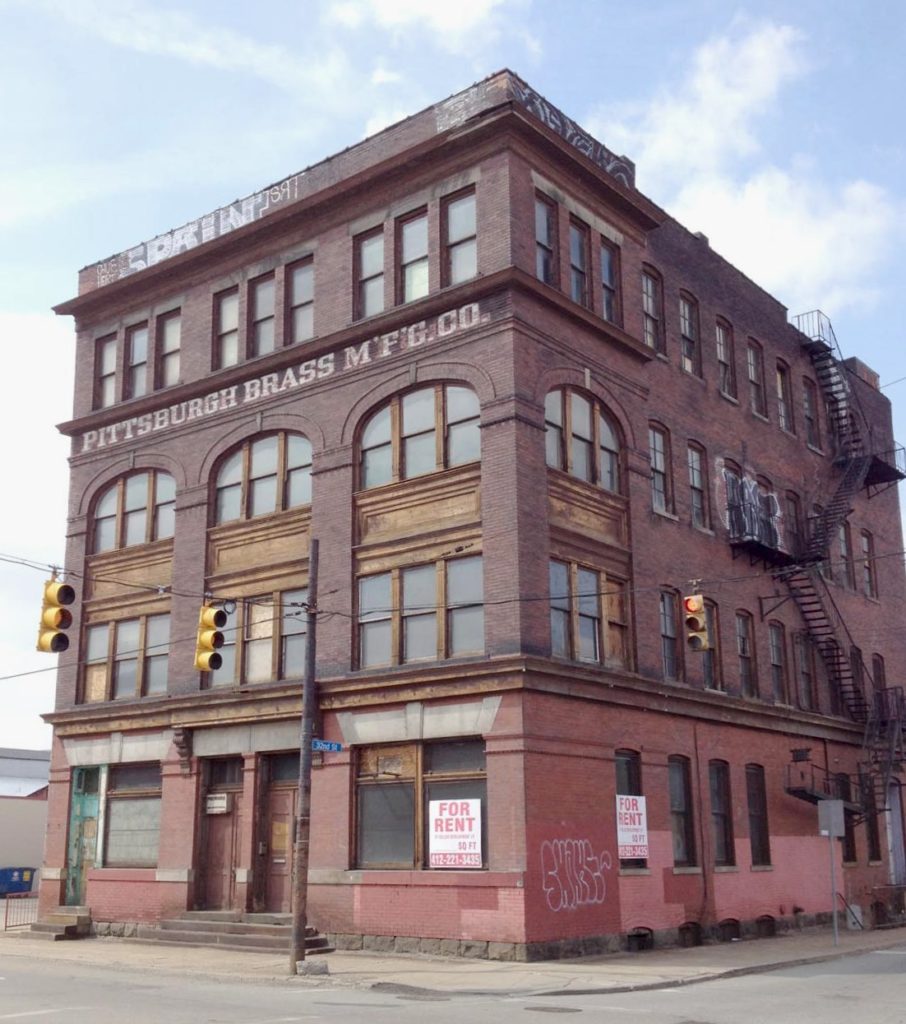
Pittsburgh Brass Manufacturing Co.
Salvation Army Building, 425-435 Boulevard of the Allies, LISTED, 2/02/16
The Salvation Army Building is significant in the area of Social History, as a prominent charitable social service institution in Pittsburgh. One of the most important of their services was known as the Evangeline Residence, providing affordable long-term housing and social activities for professional women. This 1924 building also allowed the Salvation Army to consolidate the administrative offices of the Western Pennsylvania Division of the Salvation Army into one location. In addition to these functions, the building housed an auditorium, swimming pool and other spaces for their staff and residents.
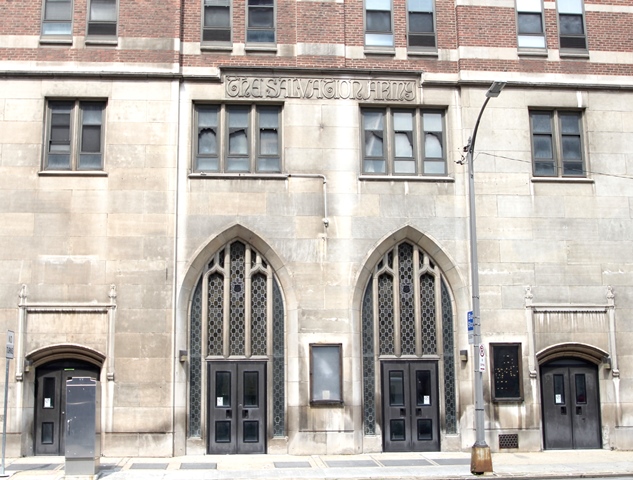
Salvation Army Building, Allegheny County
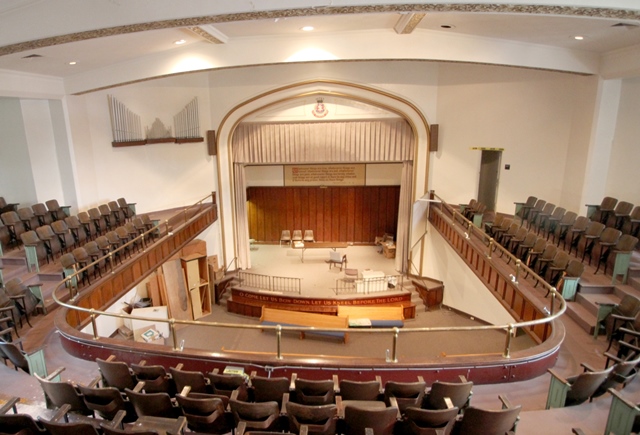
Salvation Army Building,
Allegheny County
And then there are two newly-listed properties in the boroughs of Latrobe and Brownsville:
- The Loyalhanna Lodge No. 275 in Latrobe is a significant example of early twentieth century mixed-use commercial architecture in western Pennsylvania. Funded in part by the sale of life insurance to members of the Lodge, the five story building provided retail space, residential apartments, and a Masonic lodge. It was said to be the “largest business structure ever erected in Latrobe” when it was constructed in 1926.
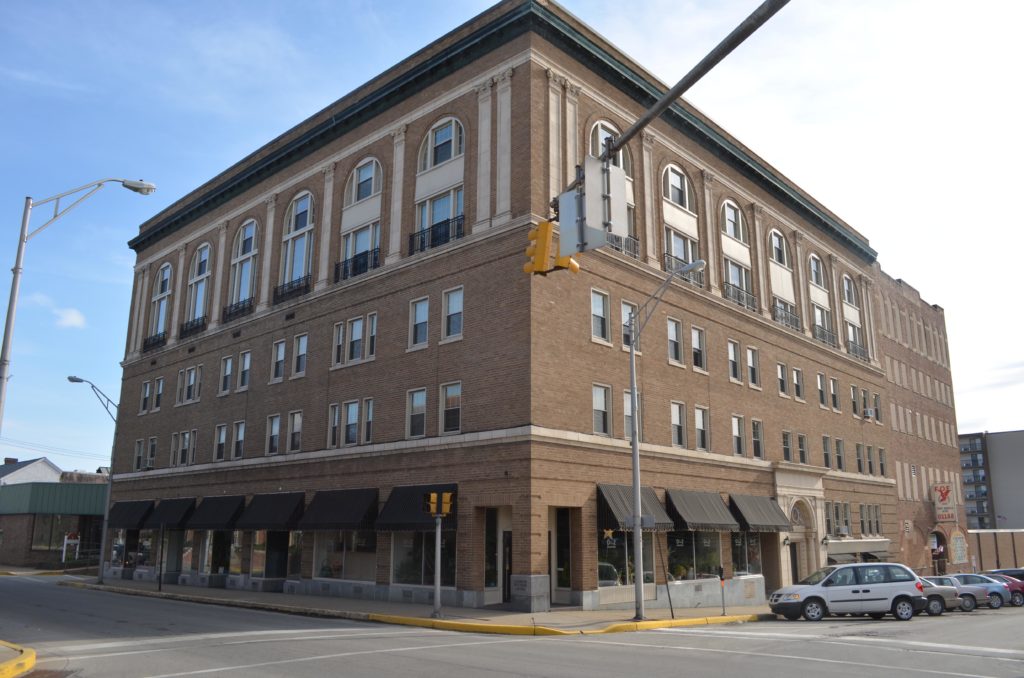
Loyalhanna Lodge No. 275, Latrobe, Westmoreland County
- An often overlooked story is revealed in Temple Ohave Israel in Brownsville. Constructed in 1919, this building is significant for its role as the center of the small, but influential Jewish community in Brownsville. In addition to providing religious services for its members, Temple Ohave Israel cultivated and strengthened its community by educating the community’s children and providing meeting space for social organizations. Among the many recent immigrants arriving in Brownsville after 1900 were Jewish immigrants from Eastern Europe. Charter members of the temple included a tailor from Hungary, as well as merchants and business owners from Austria and Germany.
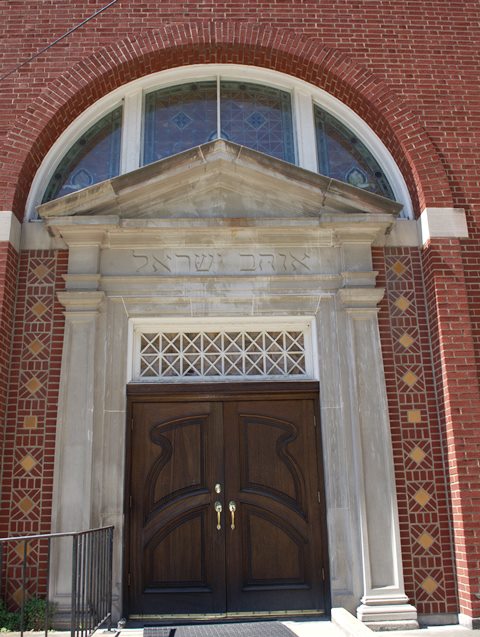
Entrance, Temple Ohave Israel, Brownsville, Fayette County
While a few of these properties were nominated to take advantage of federal tax credits for rehabilitation, most were submitted by owners who wanted to recognize and commemorate the significant local history of their farms and communities. Congratulations to all.
Comment Policy
PHMC welcomes and encourages topic-related comments on this blog. PHMC reserves the right to remove comments that in PHMC’s discretion do not follow participation guidelines.
Commenters and Comments shall be related to the blog post topic and respectful of others who use this site.
Commenters and Comments shall not: use language that is offensive, inflammatory or provocative (this includes, but is not limited to, using profanity, obscene, or vulgar comments); disparage other commenters or people; condone illegal activity; identify the location of known or suspected archeological sites; post personal information in comments such as addresses, phone numbers, e-mail addresses or other contact details, which may relate to you or other individuals; impersonate or falsely claim to represent a person or an organization; make any commercial endorsement or promotion of any product, service or publication.
If you would like to comment on other topics not related to this blog post but related to PHMC, please fill out the PHMC Contact Us Form.
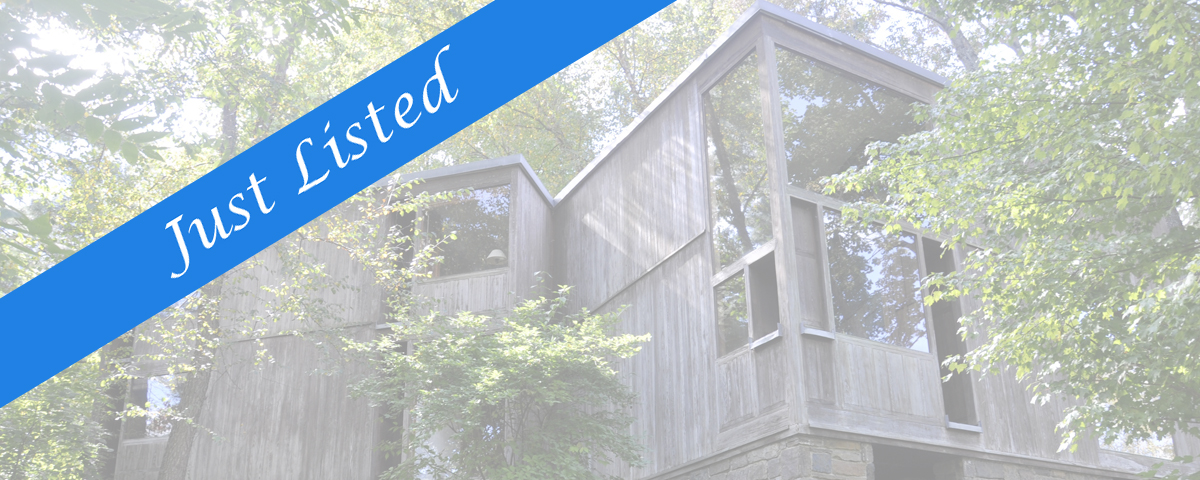
Thanks Bryan for sharing the info about the synagogue in Brownsville. I have written a power point about 2,000 years of Jewish history that focuses on synagogue architecture through the centuries.
This is an interesting building.
Warm regards,
Barbara
Thank you for sharing information on historic preservation information in Pennsylvania. We have a 100 year old historic gem of a house that we are in the process of restoring in Northwestern Pennsylvania: https://www.gofundme.com/25j2zm4
Awesum Dude..!!